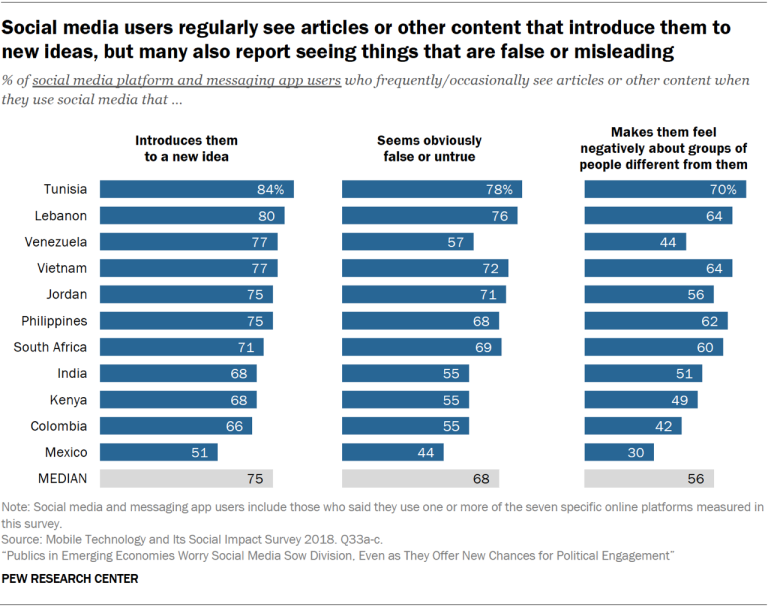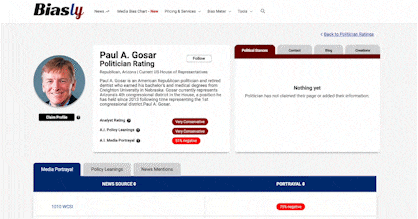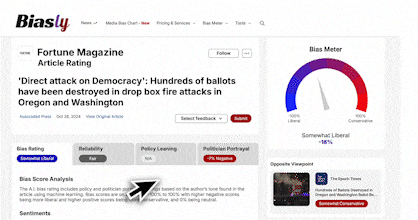
As MarketWatch is a moderately-sized news outlet, there hasn’t been a significant level of speculation over the reliability of their reporting. However, some reviews left on websites such as Trustpilot indicate a lack of trust from certain members of their audience. Ryan Knowlton, for instance, says:
“This company collaborates with Robin Hood among many others to deliver misleading news articles to steer [traders] into making unwise and risky decisions.”
- Singh also comments:
“MarketWatch is far from a reliable source of news or information for the general public let alone anyone with industry experience. There is an obvious conflict of interest between the published articles and the objective truths of the subject covered. Biases are out of control and opinion pieces are abundant with fact-based research left behind.”
While it is necessary to take these reviews with a grain of salt, the existence of such distrust within the readers of MarketWatch calls for an analysis of their reliability.
Does Reliability Matter?
Reliability, in general, refers to how trustworthy or accurate information, or in this case, a news source is. If we consider this definition, it quickly becomes clear why reliability is important in media sources. If we can’t trust the things we read then there isn’t much of a point in continuing to consume content from that source, after all. So how exactly can we gauge the reliability of a news source anyways?
There are several potential measures of reliability to look out for when trying to determine whether a media source is reliable or not. Red flags for an unreliable article can include the presence of wild unsubstantiated claims, facts dependent on other unreliable sources, heavy use of opinionated language, and more. Some indicators of a reliable news source, on the other hand, include things like:
- Absence of subjective/opinionated language in articles
- Credible sources cited (e.g., neutral sources, .gov, .edu websites)
- Facts and statistics backed by multiple relevant outside sources
- Use of primary sources when possible (e.g., interviews, quotes)
- Information that remains consistent across news sources
So How Reliable is MarketWatch?
The political reliability index developed by Biasly objectively assesses news organizations’ accuracy and trustworthiness. MarketWatch’s overall Reliability Score has been rated as ‘Good’ by Biasly. This rating is a weighted average of two distinct scores: the Fact Analysis Score and the Source Analysis Score, each evaluating separate components of MarketWatch’s Reliability. When computing the Average Reliability of the article the Fact Analysis score is more heavily weighted. These ratings are as follows in the next two paragraphs:
MarketWatch’s Fact Analysis Score is ‘Excellent,’ which suggests readers can trust almost all of MarketWatch’s content online. The Fact Analysis score focuses more on the accuracy of claims, facts, and sources presented in the article and any hints of selection and omission bias, which we will discuss further in the article.
MarketWatch’s Source Analysis Score is ‘Fair,’ which suggests readers can trust some of the sources, links, and quotes provided by the news source. This score, which is based on A.I., focuses on assessing the quality of sources and quotes used including their number, lengths, uniqueness, and diversity.
However, since these scores are based on percentages and averages, individual articles could be more or less trustworthy depending on the context, author, and other factors. Our findings show that MarketWatch’s reliability is mostly but not all factual because they have retracted several stories in the past or had pieces that were not factual.
Let us analyze the supporting data for MarketWatch’s rankings and discuss what to watch out for while searching for trustworthy news sources.
MarketWatch Accuracy and Reliability
When assessing reliability, there are multiple factors that must be taken into consideration. Firstly, we must look at what is usually associated with reliability – the number and quality of sources. But we must also take a look at selection and omission bias to make sure the sources provided aren’t cherry-picked to support one side or another.
Selection bias is when stories and facts are selected or deselected, often on ideological grounds, to create a narrative in support of the new sources’ ideology. Omission bias, on the other hand, is when different opinions and political views regarding a situation are left out so that the reader is only exposed to the ideological perspective supported by the author. It’s important to keep in mind these two types of biases when trying to assess an article’s level of accuracy.
How does Biasly measure reliability, then? Biasly’s A.I. scans articles for the number of internal and external sources, as well as the length of quotes and other factors. MarketWatch received a score of excellent reliability, although reliability will vary from article to article. As mentioned before, articles that are more politically-charged with bias are less likely to be reliable. For instance, take a look at the following articles by the NY Times (Very Liberal):
- Biden expresses solidarity with Alabama workers attempting to unionize an Amazon warehouse.
- The Truth Is About to Set Liz Cheney Free
The first article had a bias meter rating of Centrist and excellent reliability, while the second had a rating of Very Liberal and a reliability rating of good. It must be noted, however, that the relative reliability of these two articles is due to the fact that they were published by the NY Times, one of the top news outlets in the U.S. Nonetheless, it serves to illustrate the principle.
Applying this to MarketWatch’s articles, we will take a look at the article, Fair game or trash talk? Nikki Haley’s ‘scum’ comment about Vivek Ramaswamy draws attention, which was given a bias meter rating of Somewhat Liberal and retained good reliability. The author, Charles Passy, includes sources from all different perspectives on the fact that Haley called Ramaswamy “scum”:
“Some defended her use of “scum” — “If the shoe fits” said one commentator on X — but others suggested that the word constitutes inappropriate trash talk.”
Passy even covered other political controversies that had happened over the years involving the word, as well as some historical background on the insult, providing necessary contextualization:
“The dictionary platform notes that “scum” can refer to “a low, vile, or worthless person or group of people.” Of course, that’s in addition to its other meaning — as “extraneous matter or impurities risen to or formed on the surface of a liquid” (think pond scum).
The word has been around for centuries. According to the Online Etymology Dictionary, “scum” is derived at least partly from “schume,” a Middle Dutch term for foam or froth.”
Thus, this article has very good reliability as it draws from multiple sources, utilizes quotes of different lengths, and provides historical and political contextualization.
In the following sections, we will look at other similar articles and use them to determine whether or not MarketWatch is reliable overall.
Analysis of Reliability in MarketWatch’s Opinion Pieces
As stated before, op-eds are generally less reliable than purely journalistic articles.
The opinion article Third Republican presidential debate showed that no candidate is addressing financial markets’ growing concerns, for instance, while criticizing the way Democrats are handling abortion laws, mainly criticizes the way the Republican candidates for the upcoming presidential election are ignoring economic issues and policies, showing the article’s liberal bias of Somewhat Liberal.
However, that does not mean op-eds do not serve a purpose. Despite downsides, they help increase political literacy by introducing viewpoints from different political viewpoints and exposing people to a greater variety of sources.

Source: Pew Research Center
Quality of Sources and Facts Used
Let’s examine all of the sources used in the MarketWatch article, “What has Biden gotten wrong in his first 100 days? Done right? Analysts sound off,” in which author Victor Reklaitis discusses Biden’s performance in dealing with political hot topics such as border control, the refugee cap, college affordability and student loans, Iran, Russia, the nationwide vaccination program, and the US economy.
The article utilizes more than 20 quotes of varying lengths from a total of 5 people:
- Matthew Continetti, journalist and Director of Domestic Policy studies at AEI
- Larry Sabato, professor of politics at the University of Virginia
- Sarita McCoy Gregory, professor in political science at the University of Hampton
- Henrietta Treyz, Director of Economic Policy Research at Veda Partners
- Jen Psaki, former political advisor to Obama and former White House press secretary under Biden
Without regard to any selection or omission bias that may be present, these sources are reputable in and of themselves. Sabato is a well-respected political scientist and Jen Psaki, having worked as Biden’s press secretary, has a wealth of information about his presidency and what he has or has not accomplished. The other people who were quoted also have political knowledge and expertise.
On the other hand, the sources themselves are not very well-balanced. Most of the people included in the article are Democrats, with the exception of Matthew Continetti. Cherry-picking people of specific political alliances to quote is generally not good for the reliability of an article and often reflects the author’s own political alliances. In this case, the author, Victor Reklaitis, has a bias rating of Somewhat Liberal, which makes sense given the context.
In addition, most of the quotes, with the exception of the section on the stock market, an area which MarketWatch, being a primarily financial news outlet, specializes in, do not include many statistics but rather rely on quotes. This is okay for this article, as the quotes come from people with extensive political knowledge, but generally is a sign of an unreliable or biased article.
The article, Third Republican Presidential Debate, showed that no candidate is addressing financial markets’ growing concerns, and we also see a lack of statistics. In this MarketWatch article, however, the author also neglected to include many sources or quotes, making for a weak article, and the few statistics the author does include are inaccurate or misrepresented. For instance, the author, Terry Haines, says:
“In the early primary states, Trump’s lead is 10 to 12 points less than national. This means 50% to 60% of early Republican primary voters already don’t want Trump.”
Here, and throughout the rest of the article, Haines tries to claim that Trump is not as popular as people would like to believe. While this may be true, the information he uses to support his claim could be clearer. Saying that “50% to 60% of early Republican primary voters already don’t want Trump” is a misrepresentation of how the voting process works. While many Republican voters may agree that they don’t want Trump, those voters are split between the other options of DeSantis, Haley, Scott, etc. The percentage of people who agree with Trump is far greater than the percentage of people who agree with any of the other candidates.
Selection and Omission Bias
Let’s take a closer look at selection and omission bias specifically in MarketWatch’s articles.
MarketWatch articles are usually pretty unbiased and don’t really possess many reliability issues. Thus, for this section, we chose several that do possess some of these issues. Note though, that this article is an exception and not the norm.
Half of Americans say their finances have worsened under Biden. The article discusses the public’s opinion on Biden’s economic policies and the current state of the economy. However, the author only ever talks about the public’s opinion, only once mentioning whether that opinion was accurate or not. While the focus of the article was on how the public’s opinion on Bideconomics would affect the presidential election, the repeated citation of statistics that all said pretty much the same thing – that people didn’t think Biden did a good job – shows bias present in the article. Having received a bias meter rating of Moderately Conservative, it’s clear the author has a conservative bias-leaning and that it has leaked through in the form of selection bias.
In conclusion, choosing sources that only support, or hint at, one side of things is often detrimental to the reliability of an article.
Omission bias, on the other hand, typically shows up in MarketWatch articles in short pieces about certain political figures in which only negative remarks about them are included. In the longer pieces, MarketWatch generally includes an equal number of liberal and conservative stances, even occasionally making the effort to say things like:
“A question to ask Republicans: Ahead of the 2016 election, then-candidate Trump promised not to touch Social Security because a growing economy would solve its financial challenges. In fact, the program’s finances deteriorated at a record pace during his term during a period of low inflation. What happened?”
Indeed, the Social Security trust fund has been unstable ever since 2016, when it began to plateau. It wasn’t until 2020 during Covid, though, that it really began to decrease.
“A question for the Democrats: Research suggests that nearly half of those 62-65 plan to take benefits early specifically over concerns of over the solvency of Social Security. These decisions will last decades, causing havoc for those unfortunate enough to live into their 90s. The impact of insolvency is here today. As a party, Democrats are roughly $10 trillion apart on what benefits the program should provide. Why are we talking about increasing benefit levels which have grown substantially over the last couple of decades when the program can’t pay the bills it has?”
These statistics are largely true, as per The Ryan-Sununu Social Security Plan and Just 10% plan to wait until age 70 to claim Social Security, survey finds. Why experts say it’s often best to delay. The author also does not seem to specifically support one side or another here.
This, from the article Social Security: Why are politicians asking the wrong questions?, shows the author criticizing people from both aisles of the political debate.
A few examples of the short pieces mentioned above are
- There’s real bias against shorter people at work — ‘Bootgate’ is bigger than Ron DeSantis (referring to the theory that DeSantis wears heels inside his boots to make himself appear taller)
- Hillary Clinton likens Donald Trump’s supporters to cult followers (in which Clinton suggests a government cult deprogramming of Trump’s followers)
- Trump claimed his New York penthouse was 3 times its true size, evidence shows.
All of these are light-hearted articles joking about political figures, but as most of these short pieces target Republicans, they can be considered to contain traces of omission bias.
To summarize the analyses discussed above, opinion pieces are typically less reliable than regular articles, as bias tends to cloud judgment, and as MarketWatch is fairly centrist, its articles are very reliable. This tends to be a trend in finance-centric news outlets as discussion of such topics frequently requires statistics. Another thing to bear in mind is that the articles discussed in this article were chosen specifically to demonstrate the different ways unreliability shows up in news pieces, and are not representative of MarketWatch’s articles as a whole.
So Is MarketWatch Reliable?
MarketWatch is a very reliable and mostly centrist news source whose articles very rarely display selection or omission bias. When they are unreliable, however, it may not be very apparent or to a large enough degree to be obvious. To help get an overall idea of the reliability or political bias present in each article, you can use Biasly’s A.I. Bias Meter to provide a cursory rating with which to inform yourself before you begin reading.

























